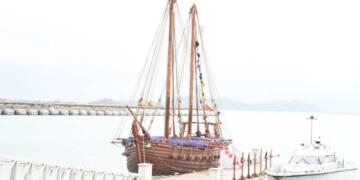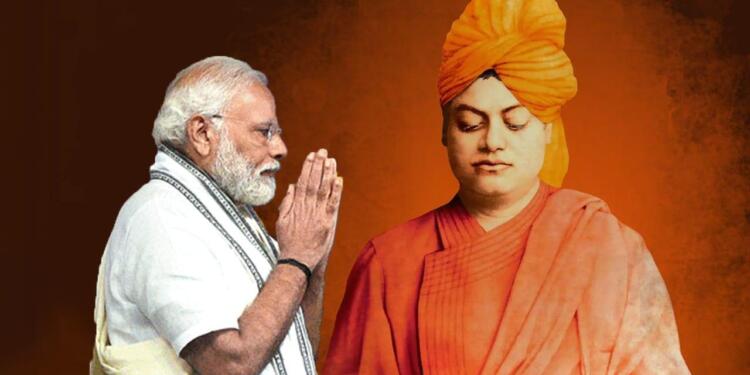PM Modi started his meditation at the Vivekananda Rock Memorial in Kanyakumari, Tamil Nadu. After the hustle and bustle of election campaigning subsided, PM Modi visited this significant site situated on the southern tip of India, where the Bay of Bengal, the Indian Ocean, and the Arabian Sea converge.
His visit spans two days, during which he also visited the Bhagavati Amman Temple in Kanyakumari. The purpose of PM Modi’s journey is not only personal meditation but also to convey a message of national unity, as it was here that Swami Vivekananda gained enlightenment and strengthened his ideals towards the nation.
PM Modi’s Historic Journey
Prime Minister Narendra Modi’s journey holds historical significance. Thirty-three years ago today, on December 11, 1991, he had also visited this place. At that time, senior leader of the Bharatiya Janata Party, Murli Manohar Joshi, had initiated the ‘Unity March’, which concluded on January 26, 1992, with the unfurling of the tricolor at Lal Chowk in Srinagar, Kashmir. The main aim of this march was to convey a message of national unity against terrorism, and it successfully traversed through 14 states.
The Story of this Memorial is Fascinating
The story behind the construction of this memorial is fascinating and inspiring. It was constructed by Eknath Ranade, a prominent figure in the Rashtriya Swayamsevak Sangh (RSS). Eknath Ranade conceptualized this memorial on the occasion of Swami Vivekananda’s centenary birth anniversary.
RN Venkatraman, who worked with Eknath Ranade for 18 years, revealed in an interview with ‘Organiser’ that discussions about Vivekananda Rock began with RSS pracharak Dattatreya Didolkar in Tamil Nadu. Swami Vivekananda himself had meditated here for three days, after which he realized his life’s purpose and the concept of “Bharat Mata” became clear to him.
The construction of this memorial faced many obstacles, especially from Christian strongholds. Eknath Ranade, accepting this challenge, transformed the state-level committee into a national committee and made this campaign successful. He collected signatures from more than 300 MPs and handed them over to the then Prime Minister, Pandit Jawaharlal Nehru, who discussed it with the Chief Minister of Tamil Nadu, Bakthavatsalam, and pushed the project forward.
The work on this memorial began in 1964
The construction work of this memorial began in November 1964, and it was inaugurated in 1970. The program was chaired by Tamil Nadu Chief Minister M. Karunanidhi. It is estimated that the construction of this memorial cost 13.5 million rupees, of which 8 million rupees were raised from public donations. Contributions from the public were collected in denominations of one, two, and five rupees. In addition to the state and central governments, Indian Army soldiers also contributed to this project.
Eknath Ranade’s dedication to this project was so immense that he urged the sculptors making Swami Vivekananda’s statue to read about Swamiji, so that they could work with dedication and accuracy. DP Roy Chowdhury, who was involved in making the Gandhi statue in Chennai and the labor statue on Marina Beach, was one of those sculptors. Eventually, the statue made by Sonawadekar was chosen. Today, the existence of Vivekanandapuram spread over 110 acres also exists.
Eknath Ranade also had the idea of installing a statue of Saint Thiruvalluvar on a nearby rock. He believed that attempting to place someone else’s statue on this small rock might diminish the stature of someone like Swami Vivekananda. Saint Thiruvalluvar was a great saint and philosopher of Tamil Nadu.
During this time, Eknath Ranade also met with MGR, who had transitioned from a popular actor to a politician and became the Chief Minister. MGR suggested that the government should take charge of this project. The government did take charge of this work, but the Vivekananda Center was also mentioned in the committee during the inauguration.
This memorial is an important part of Indian culture and history
The significance of Prime Minister Narendra Modi’s journey is immensely important from a historical and cultural perspective. Through this journey, he has not only expressed his reverence for Swami Vivekananda but also conveyed a message of national unity and harmony. This memorial is an important part of Indian culture and history, which will continue to inspire future generations.































